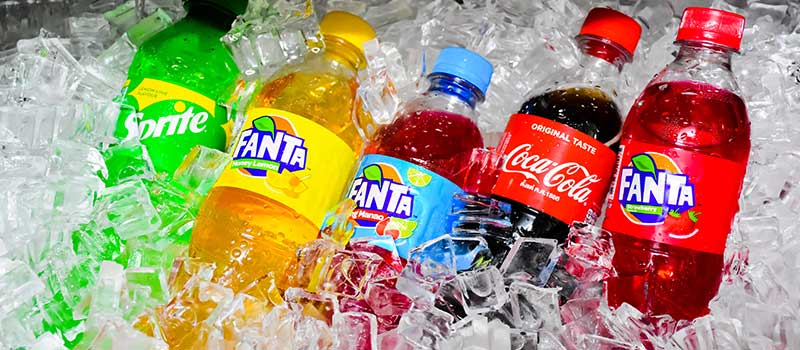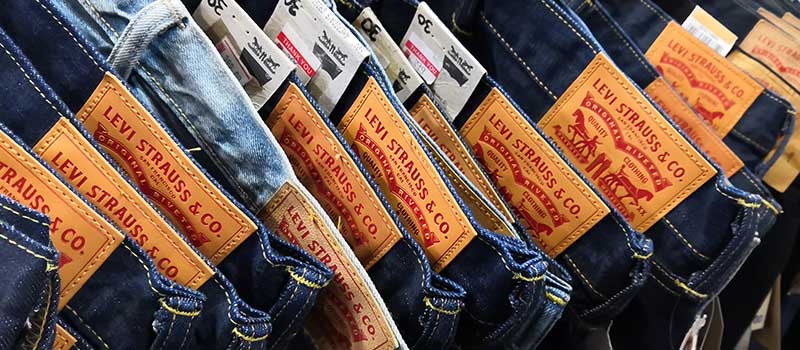For most of us, when we think about branding strategy or brands, we think of company branding.
Apple, Nike, Harley Davidson, Levi’s…
Yet often, the business brand under which a product line lives isn’t enough to be uniquely distinctive in the market.
You might be in the market for a new phone, yet an “Apple Phone” might not have the distinction, relevance, capabilities, sense of novelty or social standing that the “iPhone Pro Max” would.
This is where product branding takes centre stage.
In this article, you’ll learn what product branding is, why it’s so effective, as well as the pros, cons and best brand examples.
What Is Product Branding?

Well, the easy answer is that it’s the branding of a product. But you didn’t want a surface-level answer, did you?
So let’s dig into the bones a little.
Product branding is the discipline of actively building a positive reputation for a product. This type of branding focuses on the distinction of a product rather than a company. This is achieved by using effective positioning, distinctive brand assets and tailored brand messaging.
In other words, product branding is exactly like branding… but for products.
Product Branding vs Corporate Branding

When you build a business, you want to build the reparation of that business so more people trust it and ultimately buy products or services from it.
Actively building the reputation of a business is known as corporate branding.
It helps businesses to stand out from other businesses in the market and influences the decisions of the consumer to choose it over its competitors.
Actively building the reputation of a product is known as product branding.
Often the product brand leans on the brand equity (or reputation) of the business brand. The stronger the business brand, the greater the advantage for the product brand.
Most businesses put all their efforts into branding the business, missing out on the opportunity and advantage that product branding offers.
PRO Brand Strategy BluePrint
Build Brands Like A Pro Brand Strategist

Why is Product Branding Important?

Although we don’t tend to think of specific products when we think of branding, chances are, many of your favourite brands are product brands.
Sprite
Air Max
MacBook Pro
Big Mac
Mustang
Photoshop
501’s
These are all examples of products that stand on their own as individual brands.
In most cases, the parent brand or corporate brand that sits above the product is excluded when the product is referenced.
A successful product branding strategy makes the product the industry standard. Such is the case of Google — a brand so powerful its search engine became a verb.
For example, most people don’t use the name “Adobe Photoshop”. It’s simply known as “Photoshop”.
Explore Brand Strategy
Programs & Tools
Product Branding Pros & Cons

For most business owners, the priority lies with building the brand of the parent company, which makes sense.
If you’re successful in building a positive reputation for the company, selling products becomes much easier.
That said, there are advantages and disadvantages for building both a corporate brand and product brands.
Advantages of Product Branding

The preference of your brand within your chosen market measures how your brand compares to your leading competitors as the preferred choice in the market.
Although this doesn’t represent actual purchases, it’s a very good gauge to measure your brand’s perception and likelihood of purchase in the buying decision.
Advantage #1: Distinguishes Products For Consumers

Have you ever visited a website of a brand where they offer different services, but it’s difficult to tell which offer would be the best fit for you?
That’s because the business didn’t leverage product branding (or at least not effectively).
Branding your products individually makes them easy to distinguish from one another, ultimately making the purchasing decision easier.
The easier you make it on your customer to buy a product, the more likely they’ll be to do just that.
Advantage #2: Hyper-Targeted Positioning And Messaging

Corporate brand positioning and messaging must accommodate and appeal to the broader target market who likely have different wants and needs.
Many brands offer different products and services to meet the needs of different market segments.
Product branding allows for messaging that differs slightly from the corporate brand (though aligning with the parent brand) and appeals more directly to those who are most likely to buy.
Advantage #3: Unique Visual Identity

Product branding provides an opportunity for visual differentiation and distinctiveness amongst a portfolio of products.
Adobe do this well within their Adobe Creative Suite.
Although all of the icons look and feel like they belong to the same family, their brand color palette and unique image style make them uniquely memorable.
In the consumer space, product packaging is a powerful example of product branding. If you’re doubting this statement, think back to the last time you went to the grocery store:
You probably chose a product without even looking at the brand name — simply because you recognized the label or color scheme.
Advantage #4: Makes Brand Advocacy Easier

Last year I bought a pair of Sony Wireless Earphones.
They’re great. I still use them to this day.
Yet… I don’t know what they’re called.
Even though I see the name of the product everyday as I pair them with my devices, the name of the product is so obscure, I simply can’t remember it.
(For the record, it’s something like MX-C0013… or something ridiculous like many similar products have).
Now, of course, I could look up the name of the brand for the purpose of this article, but that would defeat the point I’m trying to make here.
If a friend asked me to recommend a pair of wireless earphones, it’s not easy for me to do so. On the other hand, if I used AirPods, it would be.
This is a massive opportunity missed by Sony for brand advocacy and market share growth.
Disadvantages of Product Branding

Although there are plenty of Pros to product branding, it’s not always an option and there are also plenty of reasons not to brand your products
Disadvantage #1: Interconnected Reputations

Product branding can be a bit incestuous.
Essentially, the products that you brand are interconnected through the relationship of the parent brand.
This risk can be minimized within a house of brands architecture where brands are managed independently (For example the way Unilever manages both Dove and Axe).
That said, where there is a more direct link between the products, a fault in one product brand can tarnish the reputation of its related parent brands.
Disadvantage #2: More Expensive Marketing

Another downside to product branding is that it’s more expensive to brand multiple products and run multiple marketing campaigns.
From brand assets, to websites to advertising creative, and media spend, product branding can get quite expensive and may be out of reach for many businesses.
Brands with limited budgets may be better placed investing their resources into a single brand for the business and a single marketing strategy to promote it.
All that said, branding your products separately, may only go as far as the name of the brand to provide distinction for consumers.
Examples Of Product Branding

Although the term “Product Branding” isn’t something that the average Joe in the street would claim to know a great deal about, without a doubt, Joe knows a lot of product brands.
Let’s take a look at a few
Coca-Cola Product Branding Example

Coke is without a doubt one of the most well-distributed products in the world.
There are few civilized places on the planet you can go to without finding a Coke in a corner shop, market stall or vending machine.
But as big as Coke is, there are still limitations on the slice of the soft-drink market share it can acquire because, quite simply, some people don’t like or want to drink Cola.
In order to both protect the brand equity of Coke and increase its market share, Coke has built a portfolio of product brands including Sprite, Fanta and Powerade as an excellent example of successful product branding.
Nike Product Branding Example

When Phil Knight created a tiny shoe company called Blue Ribbon, focused on track and field, he knew next to nothing about Golf, Soccer or Eyewear.
When Blue Ribbon went through a rebranding to become Nike and began expanding into different sports and lifestyle categories, the Nike brand turned to product branding for flexibility and specified targeting to speak more directly to niche audiences.
The Air Max brand is an example of just one of Nike’s product brands which in itself has grown a cult following.
Apple Product Branding Example

When Steve Jobs returned to Apple in 1997, he killed 70% of the products in development in order to simplify the Apple brand and its product offering.
What remained what a streamlined portfolio of product brands that made consumer decision making and product reputation growth much easier.
Although Apple has many more products today, they’re each masterfully branded from name to design. And if you think about it, they’re mostly iterations of a single product rather than a wide range — you have a smartphone, a tablet, a desktop computer, a laptop, and a watch in the main lineup — all of which appeal to the same target audience and are developed under one brand identity, so much so that a hardcore Apple fan can easily have all of their electronics be the same space gray and let’s not forget about Apple’s iconic logo design.
Although their individual product brands are catapulted from the equity of the Apple reputation, they’re each known in the market as individual brands, which include:
iPhone
iMac
MacBook Pro
iWatch
iPad
McDonald’s Product Branding Example

Although MacDonald’s releases new products at breakneck speed, many of which are limited offers, some products have become the cornerstone of the daddy of the fast-food category.
Though many of their favourites are uniquely distinguished as McDonalds products with the simple “Mc” before the product name, from McNuggets, to the McChicken Burger and everywhere in between, their poster child product is still the Big Mac.
Adobe Product Branding Example

Although Adobe isn’t a household name brand, it most certainly is for brand designers across the globe.
Adobe has a large portfolio of products that all offer customers different capabilities which leverage different skill sets.
From Photoshop to Indesign and everywhere in between, it would be very easy for Adobe to confuse their customers without leveraging product branding to distinguish between them.
Their uniquely coloured icons, image style and other brand assets make identifying products easy and also allow each product to develop its own reputation in niche markets.
Ford Product Branding Example

Ford is a brand with real heritage that has been around for so long, it was involved in the transport industry’s transition from horses to cars.
As Henry Ford once said: “If I asked people what they wanted they would have said faster horses.”
There are many classic cars in Ford’s history. But few with the beauty and nostalgia of the Mustang.
Through roles on the big screen including Steve McQueen’s “Bullet” and “Gone in 60 seconds”, the Mustang is a product brand that stand out on its own.
Levi’s Product Branding Example

Growing up in the 90s, Levi’s were the brand of jeans everyone in my little corner of the world wore — or at least wanted to wear.
But the brand Levi’s on their own wasn’t enough.
They had a 100-year-old product brand that set the bar, cut the mustard and gained approval.
It wasn’t enough to have a pair of Levi’s. If you didn’t have 501’s, you had nothing.
Over To You
Product branding is simply one strategy of many brands can use to distinguish themselves and their products.
A strong product brand encompasses aspects like a tagline, product design, packaging design, and the company’s values to captivate potential customers and foster customer loyalty in the long run.
At the top end, your product branding efforts can be as expansive and expensive as you want them to be. That said, some of the benefits of this strategy can be leveraged simply by naming and distinguishing your products clearly from one to the next.
Your approach should be rooted in thorough market research and align with your overall objectives. And it should be part of your larger brand personality so that the product doesn’t feel foreign to your existing follower base and feeds into your brand awareness.
As with everything in branding, the easier you make your products and services to understand, the easier you make them to buy…
On-Demand Digital Program
Brand Master Secrets
Make the transition from hired-gun to highly valued brand strategist in less than 30 days. The systems, frameworks and tools inside this comprehensive program are all you need to level up.








